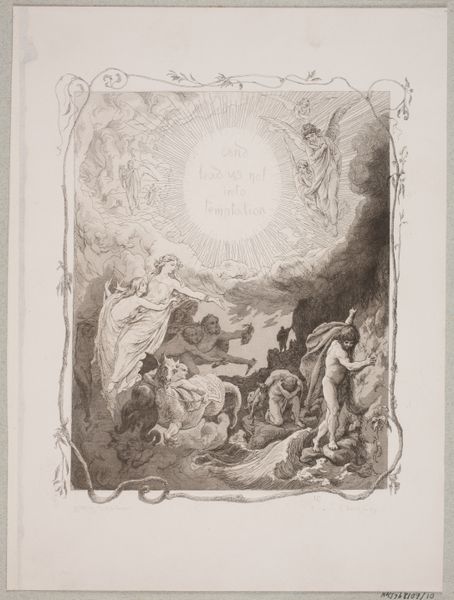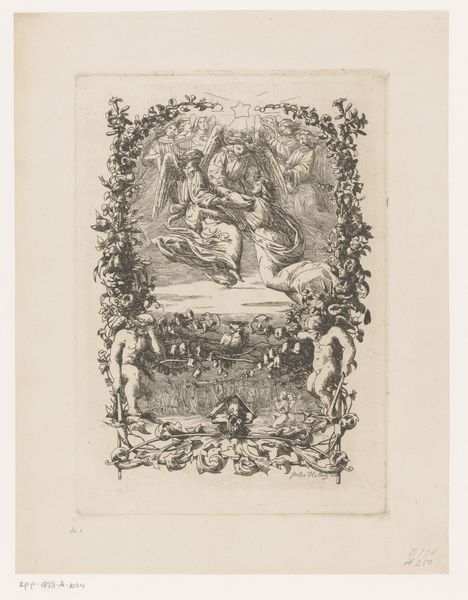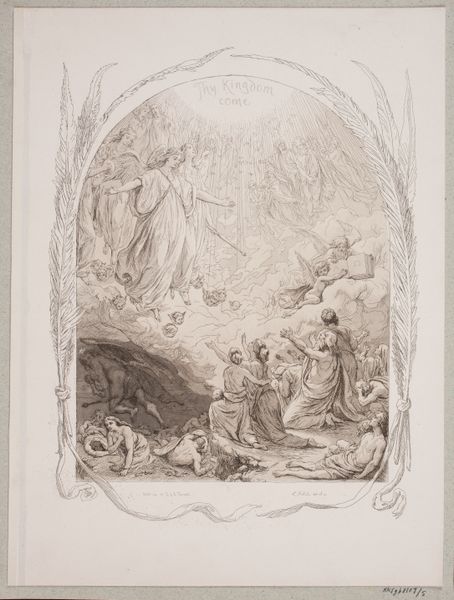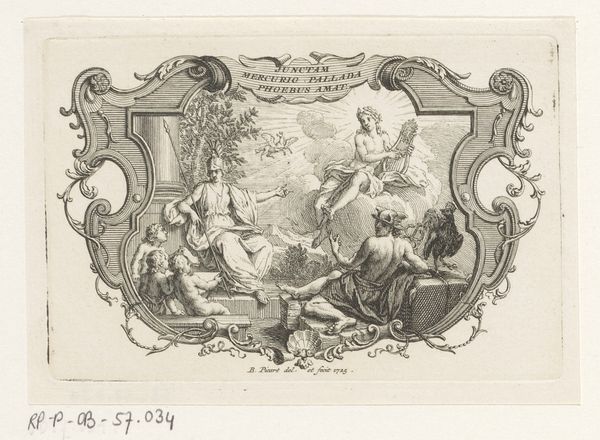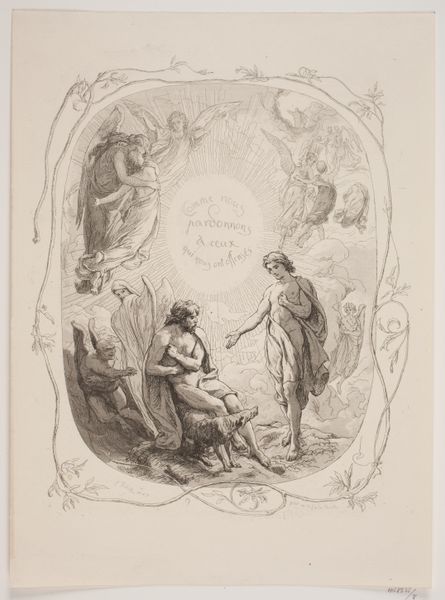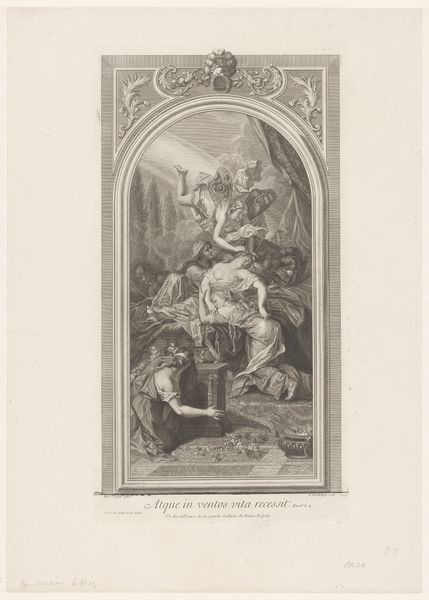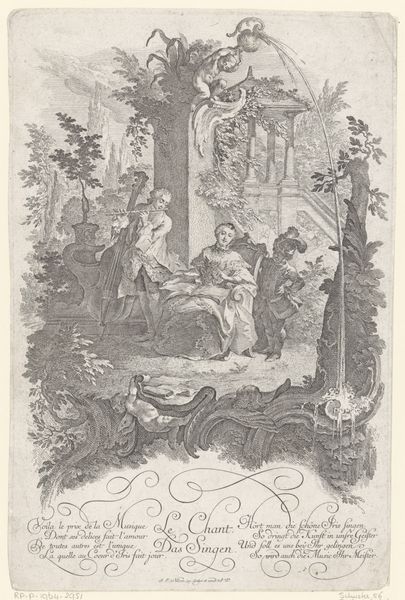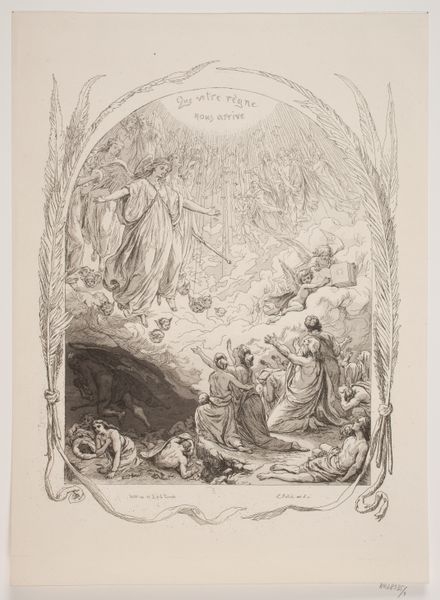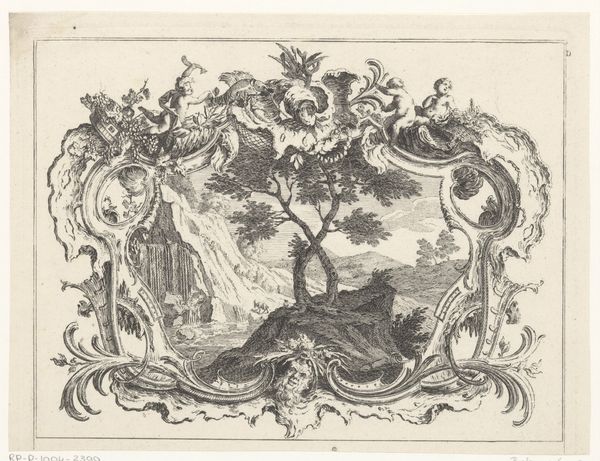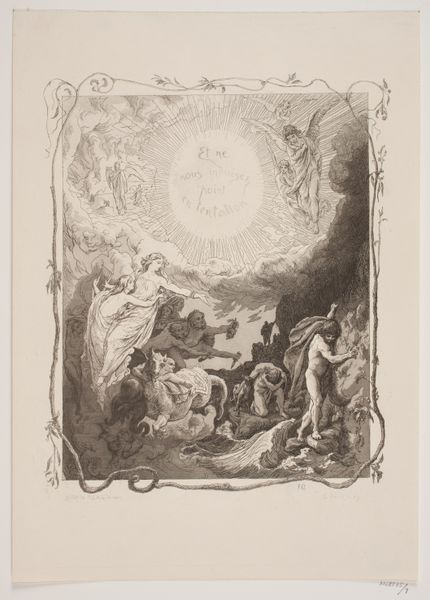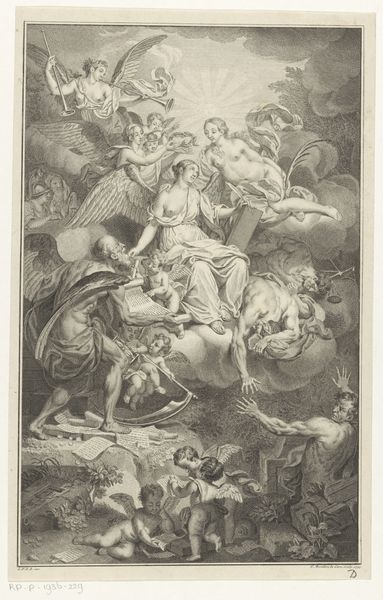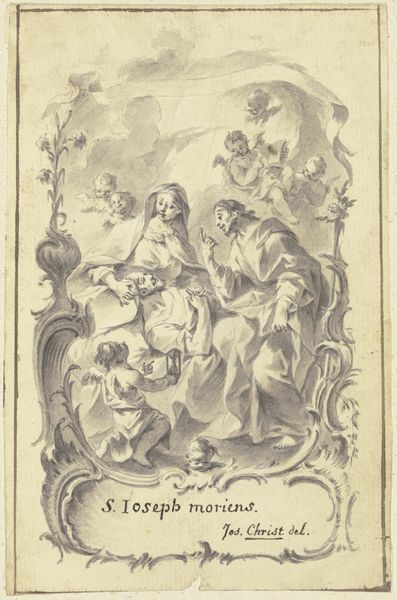
drawing, print, engraving
#
drawing
#
narrative-art
# print
#
history-painting
#
engraving
Dimensions: 306 mm (height) x 220 mm (width) (bladmaal)
Editor: Here we have Lorenz Frølich's "Illustration til "L'Oraison Dominicale"" from 1863, rendered as a drawing and print with engraving. The overall tone seems to be quite dramatic, filled with dynamic figures and swirling patterns. How do you interpret this work, looking at it through your lens? Curator: This piece compels me to think about the labour embedded in its creation and the social context it reflects. Consider the physical act of engraving – the repetitive, skilled handwork necessary to produce such detail. It wasn't merely about artistic inspiration; it involved specific means of production reliant on workshop practices, the availability of materials, and even the economic conditions of the time. Who was the intended consumer, and what socio-economic bracket did they belong to? Editor: That’s interesting. So you are focusing on the process of creating it? Curator: Precisely. The choice of engraving as a medium speaks volumes. It allowed for reproducibility and wider distribution than painting, therefore impacting consumption patterns. Was this piece meant to democratize religious imagery, making it accessible beyond the elite? What was the role of printmaking in 19th century Europe, both in commerce and the circulation of ideas? What stories about power and production are engraved--literally--into the artwork? Editor: I hadn't considered the social impact of printmaking itself. How does the content of the illustration fit into this material analysis? Curator: Even the subject matter -- seemingly a depiction of prayer -- carries material implications. Is this scene idealizing agrarian life or pointing towards a deeper social critique, reflecting on land ownership or economic inequality? The "daily bread" aspect in prayer intersects directly with the literal bread being produced and consumed, thus pointing to economic forces at play. Editor: It is more complicated than it seems on the surface, thank you for making me think about this artwork and it’s socio-economic implications! Curator: Indeed. By considering its means of production, and intended circulation, we come to a more nuanced view on the values it might promote or critique.
Comments
No comments
Be the first to comment and join the conversation on the ultimate creative platform.
